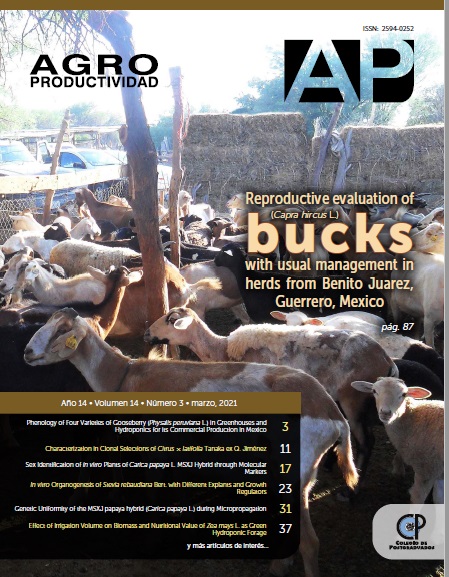EFFECT OF IRRIGATION WATER VOLUME ON BIOMASS PRODUCTION AND NUTRITIVE VALUE OF HYDROPONIC GREEN CORN FORAGE (Zea mays L.)
Main Article Content
Keywords
Forage, hydroponic, corn, biomass, digestibility.
Abstract
Objective: To evaluate the effect of irrigation water volume on biomass production and quantify the nutritive value of hydroponic green corn forage (HGCF) for sheep.
Design/methodology/approach: Three treatments to evaluate the irrigation water volume were used: T1) 9.48 l/m2 day-1; T2) 18.95 l/m2 day-1 y T3) 28.43 l/m2 day-1, using a completely randomized block design. For determination of the nutritional value, four levels of inclusion (0.20.40, 60% DM) of HGCF in the diet of 16 sheep were used. A completely randomized design and a linear regression model were used.
Results: A higher weight of the fresh biomass of HGCF was observed with T3 (P <0.01). The apparent digestibility values of DM, OM, CP, NDF and ADF of HGCF ranged between 80 and 89%. The estimated digestible energy was 3.9 megacalories/ kg DM.
Limitations on study/implications: Forage production in dry tropics is considered to be significantly seasonal, however, HGCF represents a viable alternative for the rapid production of forage in a sustainable way and of high nutritional quality for animals.
Findings/conclusions: The highest yields of fresh biomass from the hydroponic green corn forage are obtained using a higher volume of irrigation water. Likewise, it’s a forage of high nutritional value for sheep, with a considerable amount of digestible energy, so it can be used as an excellent source of forage for feeding animals.

